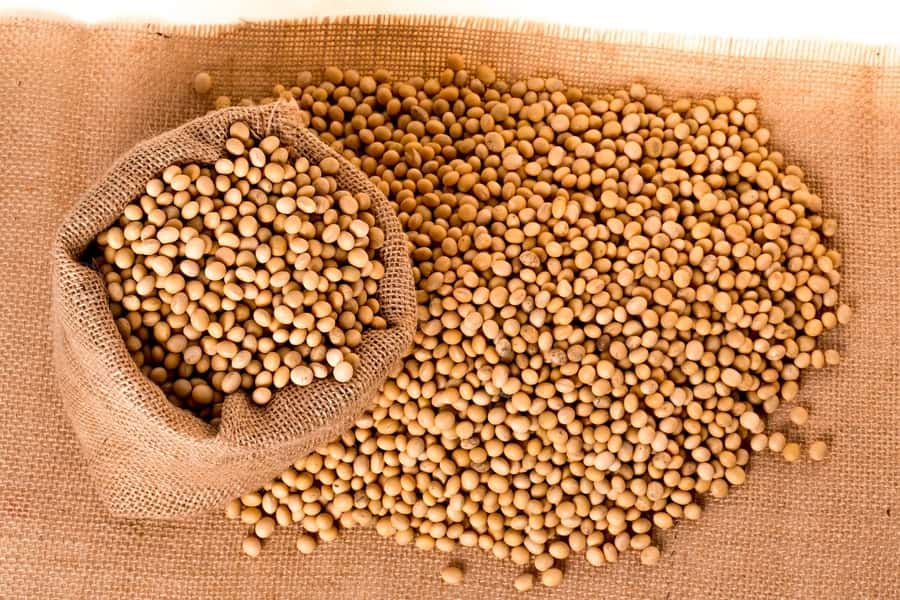The planting of the new Brazilian soybean crop resumed a slower pace between November 12 and 18. As mentioned in the previous week, the arrival of more relevant moisture in all the growing regions of the country prevented a better advance of machines in some states, which ended up weighing on the national index.
According to a survey carried out by SAFRAS & Mercado, until November 18, Brazilian growers sowed 76.7% of the total area expected for the country in the 2022/23 crop. The percentage is equivalent to approximately 33.54 mln hectares sown, out of a total of 43.739 mln hectares estimated for planting. In the previous week, the percentage was 67.3%. In the same period last year, the percentage reached 84.2%, while the five-year average for the period is 77.0%.
In Rio Grande do Sul, out of a total area estimated at 6.55 mln hectares, 30% were sown, or approximately 1.965 mln hectares. In the previous week, the percentage was 18%. In the same period of the previous year, the percentage was 53%, while the five-year average for the period is 46.4%.
In Paraná, 96% of the area destined for soybeans were sown. The percentage is equivalent to approximately 5.52 mln hectares planted, out of a total of 5.75 mln hectares estimated for the state. In the previous week, the percentage was 84%. In the same period last year, the percentage reached 97%, while the five-year average is 94.2% for the period.
In Mato Grosso, out of an expected total area of 11.8 mln hectares, 99% have already been sown, equivalent to approximately 11.682 mln hectares. In the previous week, the percentage was 98%. In the same period of the previous year, the percentage was 99%. The five-year average for the period is 96.6%.
In Mato Grosso do Sul, planting reaches 99% of a total area estimated at 4.039 mln hectares, equivalent to approximately 3.672 mln hectares. In the previous week, the percentage was 90%. In the same period last year, the percentage was 99%. The five-year average for the period is 95.6%.
In Goiás, out of an expected total area of 4.45 mln hectares, 85% were sown, equivalent to 3.783 mln hectares. In the previous week, the percentage was 73%. In the same period last year, the percentage was also 97%, while the five-year average for the period is 84.2%.
In São Paulo, out of a total area estimated at 1.35 mln hectares, 80% were sown, or approximately 1.08 mln hectares. In the week earlier, the percentage was 70%. In the same period of the previous year, the percentage was 92%, while the five-year average for the period is 80.2%.
In Minas Gerais, out of an expected total area of 2.1 mln hectares, 69% were sown, or approximately 1.449 mln hectares. In the previous week, the percentage was 51%. In the same period last year, the percentage was 85%, while the five-year average for the period is 78.6%.
In Bahia, from an area estimated at 1.9 mln hectares, 48% were sown, or the equivalent of 912 thousand hectares. In the previous week, the percentage was 36%. In the same period last year, the percentage was 75%, while the five-year average for the period is 45.0%.
Weather forecasts point to the maintenance of moisture in most states between November 20 and 26, but with higher accumulations expected for part of the states of Mato Grosso, Goiás, Minas Gerais, Bahia, Tocantins and Pará. The other states must receive rains, but at lower levels.
Between November 27 and December 3, moisture increases again throughout the country, with large accumulations being expected for the states of Paraná, São Paulo, Minas Gerais, Mato Grosso, Goiás, and the states of the North and Northeast regions.
These two weeks of higher moisture must prevent a better advance of machines in some states, although some states of the Midwest are already close to the last areas to be seeded. As for crop development, moisture is relatively welcome in some states.

